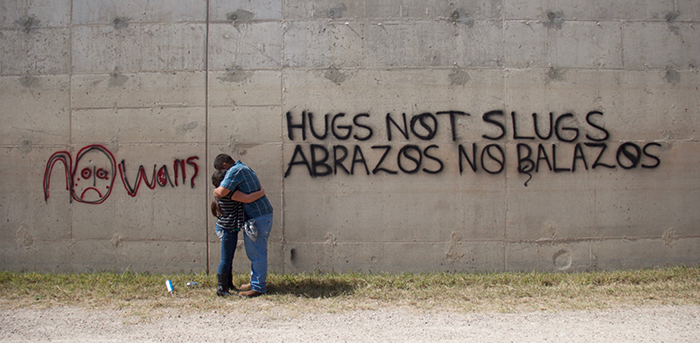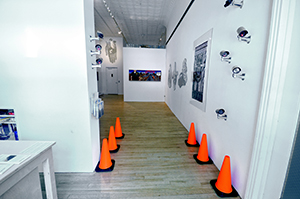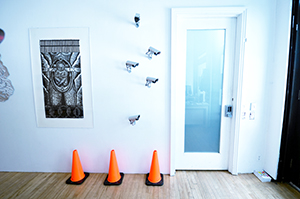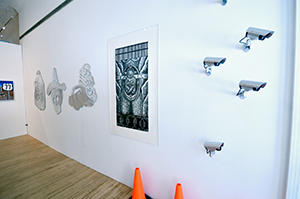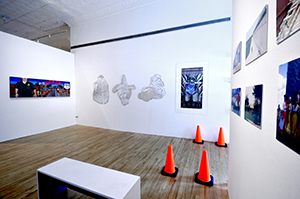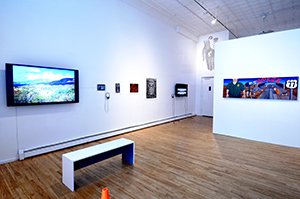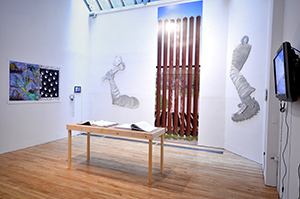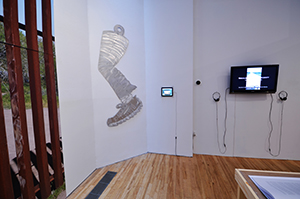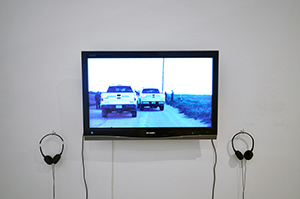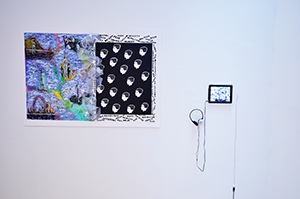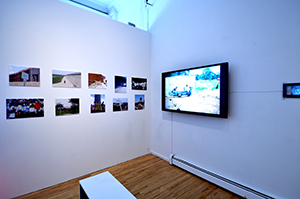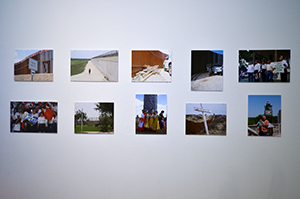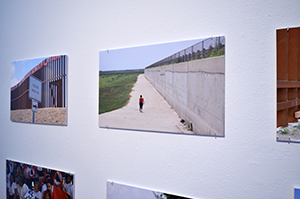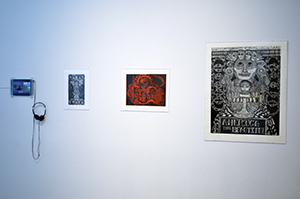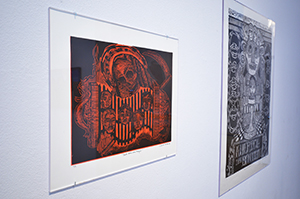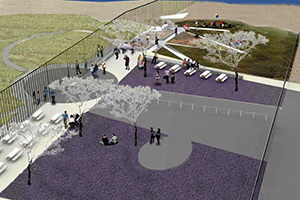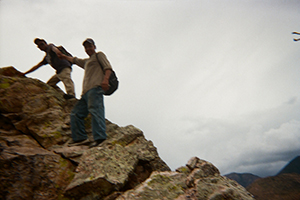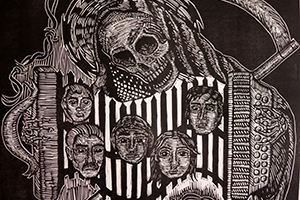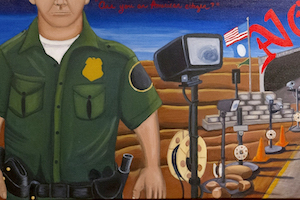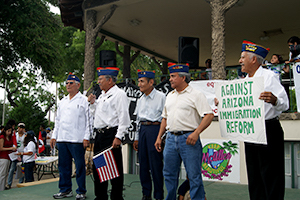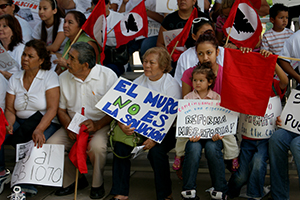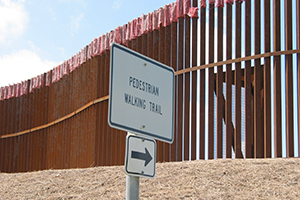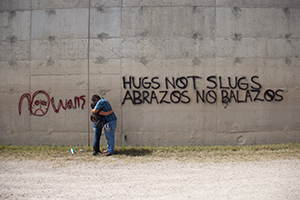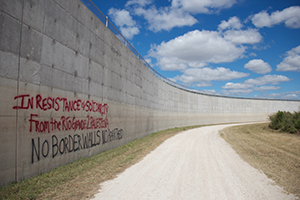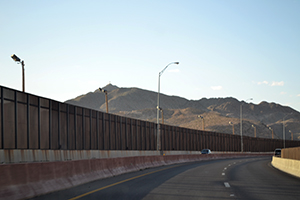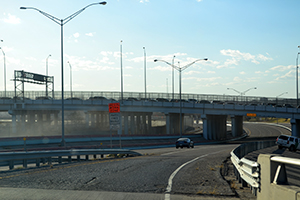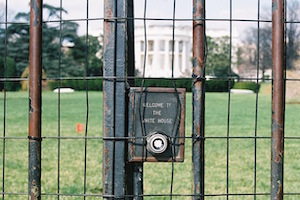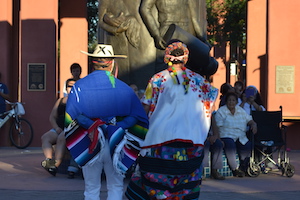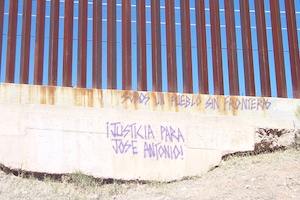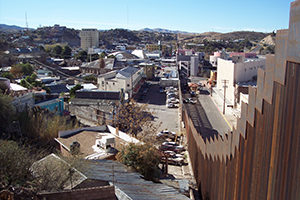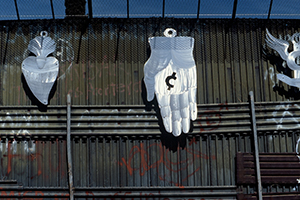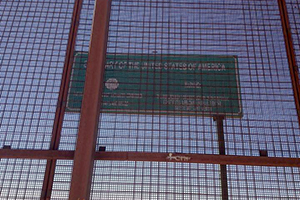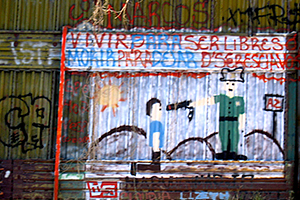We live in a world of walls. With the fall of the Berlin Wall in 1989, pundits rejoiced in the dawn of a new era, a world without
walls. Instead, walls now permeate our world with at least 33 nation-states constructing them. These walls are the centerpiece
of policies aimed at increased surveillance and militarization and the reconfiguration of rights and citizenship at borders.
Concrete walls, metal fences, and concertina wire speak to the overwhelming military logic that guides our current approach
to borders. In the United States presidential candidates compete over who will do more to militarize "the border." Mainstream
media, through its reporting and circulation of images, fuels the public's articulation of borders as war zones.
The bilingual (English and Spanish) group exhibition Fencing in Democracy brings together work by artists, activists, architects, and anthropologists who have created alternative designs for the U.S.-Mexico border wall, opposed its construction, and/or portrayed its impacts and on border life and culture. The exhibit explores what it means to fence in, or enclose, democracy. Works range from Maurice Sherif's photography with its emphasis on the harshness of the border wall's metal rendering the landscape as barren, to James Brown's architectural plans for a "friendlier" friendship park. The exhibit also features the work of artists who have located their art on the border wall itself. Finally, artists such as Celeste De Luna portray the border wall as scarring and cutting 'the in-between spaces' that border residents inhabit.
The bilingual (English and Spanish) group exhibition Fencing in Democracy brings together work by artists, activists, architects, and anthropologists who have created alternative designs for the U.S.-Mexico border wall, opposed its construction, and/or portrayed its impacts and on border life and culture. The exhibit explores what it means to fence in, or enclose, democracy. Works range from Maurice Sherif's photography with its emphasis on the harshness of the border wall's metal rendering the landscape as barren, to James Brown's architectural plans for a "friendlier" friendship park. The exhibit also features the work of artists who have located their art on the border wall itself. Finally, artists such as Celeste De Luna portray the border wall as scarring and cutting 'the in-between spaces' that border residents inhabit.
Dr. Miguel Díaz-Barriga is currently a Professor of Anthropology at the University of Richmond. Previously he taught at University of Texas Rio Grande Valley and served as the The Carol L. Zicklin Endowed Chair for the Honors Academy at Brooklyn College. He received his bachelor's degree in Anthropology from the University of Chicago and his masters and doctorate degree from Stanford University. His research has focused on concepts relating to Mexican-American politics and identity, Latin American social movements, and border studies. He is the recipient of grants and research awards including the National Science Foundation for the project "The Border Wall, Immigration, and Citizenship on the United States/Mexico Border.? Professor Diaz-Barriga served as the President of the Association of Latina and Latino Anthropologists of the American Anthropological Association (AAA) from 2010-2012. His forthcoming book with Margaret Dorsey is entitled Militarization on the Edge: Necro-Citizenship and the U.S.-Mexican Border Fence.
Margaret Dorsey is currently an Associate Professor of Anthropology at the University of Richmond. Previously, she taught at the University of Texas Rio Grande Valley (UTRGV) and was a Visiting Associate Professor of Anthropology at Brooklyn College (CUNY) from 2014-2015. Her research focuses on border security, Mexican American folklore, and border studies more generally. In 2014 Dorsey resided in Santa Fe as a Ethel-Jane Westfeldt Bunting Fellow at the School for Advanced Research. Dorsey has won numerous grants (National Endowment of the Humanities, National Science Foundation) and published numerous articles on borderlands music and politics and is currently completing a book manuscript with Miguel Díaz-Barriga on border security. Her other book-length projects include Linda Escobar and Tejano Conjunto Music in South Texas (2013) and Pachangas: Borderlands Music, U.S. Politics, and Transnational Marketing (2006). Dorsey is founding curator of the Border Studies Archive at UTRGV.
Margaret Dorsey is currently an Associate Professor of Anthropology at the University of Richmond. Previously, she taught at the University of Texas Rio Grande Valley (UTRGV) and was a Visiting Associate Professor of Anthropology at Brooklyn College (CUNY) from 2014-2015. Her research focuses on border security, Mexican American folklore, and border studies more generally. In 2014 Dorsey resided in Santa Fe as a Ethel-Jane Westfeldt Bunting Fellow at the School for Advanced Research. Dorsey has won numerous grants (National Endowment of the Humanities, National Science Foundation) and published numerous articles on borderlands music and politics and is currently completing a book manuscript with Miguel Díaz-Barriga on border security. Her other book-length projects include Linda Escobar and Tejano Conjunto Music in South Texas (2013) and Pachangas: Borderlands Music, U.S. Politics, and Transnational Marketing (2006). Dorsey is founding curator of the Border Studies Archive at UTRGV.


